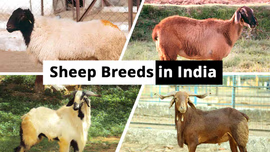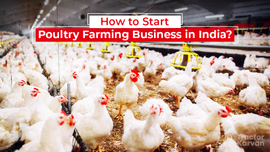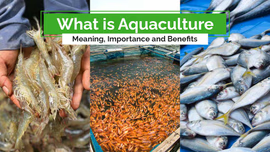How to Start Goat Farming in India: Complete Process and Project Cost

Goats are known as the poor man's cow as they require less investment and are less expensive to rear. Goat farming is a profitable and sustainable livestock business in India. It is a vital part of dryland farming systems and is prominent in dryland regions.
Table of Contents
- Introduction
- Why Choose Goat Farming Business in India
- How to Start Goat Farming in India
- Goat Farming Project Cost
- Conclusion
Introduction
India has the largest goat population in the world, at 148.88 million, according to the 20th Livestock Census. Goats are versatile and multi-purpose animals. They play an important role in India's economy and meet the essential nutritional requirements of small and marginal farmers and the landless population of rural India.
Goat Farming in India involves breeding, raising, and rearing different goat breeds for the purposes of milk, meat, and fibre. It is an important part of Dryland Farming in India. The goat farming business is usually undertaken in regions with less rainfall, such as the arid or semi-arid regions of Rajasthan and Gujarat.
Why Choose Goat Farming Business in India
Over the years, goat farming has become one of the most profitable Agricultural Businesses in India. The cost-to-benefit ratio of raising a goat is 1:11.7 and has an investment rate of return (IRR) value of 30%. The reasons for the increasing popularity of the goat farming business are:
- Increase demand for goat milk (during Dengue fever), meat, hide and fibre.
- It requires less space, fewer management skills, and fewer additional facilities.
- The production cost of infrastructure, treatment and feeding is less.
- The gestation period of goats is only 5 months, making them a prolific breeder.
- They can adapt to all types of agro-climatic conditions, and many types of goat breeds are available in India.
What makes goat farming in India more attractive is the government support. Under the National Livestock Mission, the government provides a capital subsidy of 50% for setting up a goat farm comprising 500 females and 25 males.
How To Start a Goat Farm in India?
Goat farming in India is currently intensive and semi-intensive, wherein goats are reared for commercial production. Let us see the steps involved in setting up a goat business in India.
Select the Type of Goat Farm

Before setting up a goat farm, you need to decide upon the type of goat farm you will set up. The main different types of goat farms are:
- Dairy goat farm: Focused on milking goats for milk products.
- Fibre goat farm: Focused on rearing goats for fibres used in textile industries.
- Meat goat farm: Focused on rearing goat for meat production.
- Integrated goat farm: This involves raising goats for multiple purposes.
Select the Goat Breed
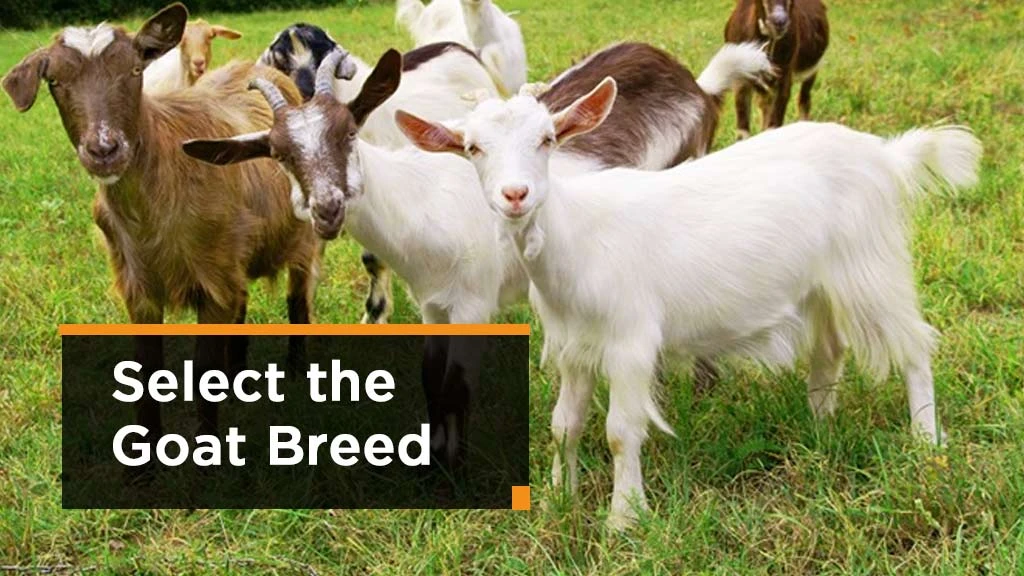
India has more than 26 registered Goat Breeds. Each breed is known for its specific use. For instance, Boer goats are famous for their meat, Cashmere goats are well-renowned for their fibres, and Alpine goats are popular dairy animals. Depending upon your goat farm type, a particular breed can be selected and reared.
Further, you must choose healthy goat breeds and ensure they are vaccinated and disease-free. Also, try to maintain the correct ratio of males to females to facilitate breeding and consider selective breeding over time.
Construct the Right House
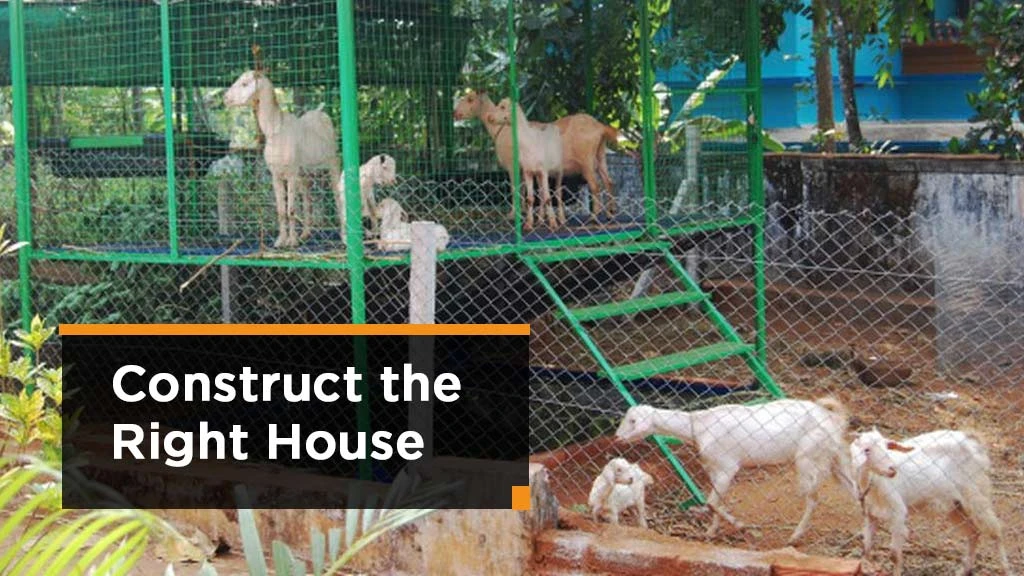
Constructing the right house for goats is essential for the success of the goat farming business. The space required to build a shelter for a small and medium scale goat farm range from 27-meter square (10 female +1 male goat) to 72-meter square (25 female + 3 male goat).
The house should be semi-closed with a sloppy roof for goats' comfort. It should be constructed on a raised platform (usually 1 meter above ground level).
Besides, each category of goats should have separate houses. Pregnant goats can be kept separate from lactating or sick goats.
Further, the shed should have enough plantation to protect the goats from scorching heat and direct winds in summer. At minimum, two trees should be planted in each paddock.
Proper Feeding and Nutrition
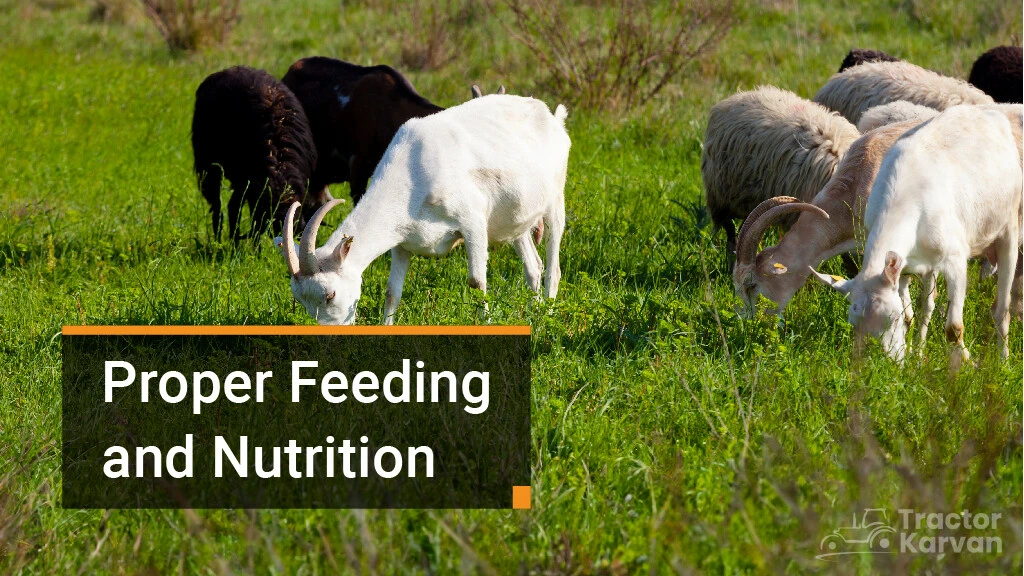
Feeding goats is less costly as they can easily be raised on green grasses. However, fertile land and assured irrigation facilities should be available to provide green fodder to the goats throughout the year.
Goats are the largest consumers of dry matter compared to sheep, buffaloes, and cattle. Plus, goats require four times the Dry Matter they consume. So, a freshwater supply is essential for the goat farm business.
Further, according to the Ninth Nutrition Committee of AICRP on Goats, goats need more minerals, especially phosphorous (P) and calcium (Ca). A goat with an average weight of 45 kg requires 3.26 grams of P and 6.69 grams of Ca daily to maintain itself. Besides, goats require higher Sodium Chloride (NaCl) as they produce salty milk.
Health Management and Veterinary Care
- Goats should be monitored and inspected frequently for signs of injury or disease. It helps assess hoof health and body condition.
- Remove the goats showing clinical signs of limping or weight loss from the herd for further treatment.
- Preventive health measures like hoof trimming and vaccinations should be practised routinely.
- Develop a herd health plan to address nutrition, breeding selection criteria, parasite control, and disease prevention.
Marketing and Sales
Market your goat products to target customers through various marketing channels, such as local markets, restaurants, and online platforms. Establish a brand identity for your farm and ensure product quality and hygiene.
Goat Farming Project Cost
The cost of a goat farming project involves expenses on various items. These include the cost of space, the number of goats, animal feed, and additional facilities like electricity.
In India, starting a goat farm business comprising 500 females and 25 males usually costs around INR 85 lakhs*. This includes an 80% term loan and a 20% own contribution. So, with a government subsidy of 50% on capital expenditure under NLM, the net expenditure comes to around INR 37.50 lakhs*.
Conclusion
Starting a goat farming venture in India can be rewarding and profitable, provided you understand the basics of goat farming, invest wisely, and manage your farm efficiently. With a growing demand for goat meat and a range of goat products, there is ample opportunity to thrive in this industry.
Frequently Asked Questions On How to Start Goat Farming in India: Complete Process and Project Cost
1. How to start a goat farm?
To start a goat farm, you first need to decide on the type of goat farm and then select the right goat breed.
2. How do I get a subsidy for goat farming?
To get a subsidy for goat farming, you need to submit an application through the NLM portal. The entire subsidy will be provided through SIDBI.
3. Which goat is best for goat farming in India?
The selection of the best goat for goat farming depends on the type of goat farm you want to establish. If you want to establish a meat goat farm, Boer goats are the best, and if you want to establish a goat dairy farm, Alpine goats are the best.
4. How profitable is goat farming in India?
The investment rate of return (IRR) on goat farming in India is around 30%.


Related Blogs
